We've written a paper on online imitation learning, and our construction allows us to bound the extent to which mesa-optimizers could accomplish anything. This is not to say it will definitely be easy to eliminate mesa-optimizers in practice, but investigations into how to do so could look here as a starting point. The way to avoid outputting predictions that may have been corrupted by a mesa-optimizer is to ask for help when plausible stochastic models disagree about probabilities.
Here is the abstract:
In imitation learning, imitators and demonstrators are policies for picking actions given past interactions with the environment. If we run an imitator, we probably want events to unfold similarly to the way they would have if the demonstrator had been acting the whole time. No existing work provides formal guidance in how this might be accomplished, instead restricting focus to environments that restart, making learning unusually easy, and conveniently limiting the significance of any mistake. We address a fully general setting, in which the (stochastic) environment and demonstrator never reset, not even for training purposes. Our new conservative Bayesian imitation learner underestimates the probabilities of each available action, and queries for more data with the remaining probability. Our main result: if an event would have been unlikely had the demonstrator acted the whole time, that event's likelihood can be bounded above when running the (initially totally ignorant) imitator instead. Meanwhile, queries to the demonstrator rapidly diminish in frequency.
The second-last sentence refers to the bound on what a mesa-optimizer could accomplish. We assume a realizable setting (positive prior weight on the true demonstrator-model). There are none of the usual embedding problems here—the imitator can just be bigger than the demonstrator that it's modeling.
(As a side note, even if the imitator had to model the whole world, it wouldn't be a big problem theoretically. If the walls of the computer don't in fact break during the operation of the agent, then "the actual world" and "the actual world outside the computer conditioned on the walls of the computer not breaking" both have equal claim to being "the true world-model", in the formal sense that is relevant to a Bayesian agent. And the latter formulation doesn't require the agent to fit inside world that it's modeling).
Almost no mathematical background is required to follow [Edit: most of ] the proofs. [Edit: But there is a bit of jargon. "Measure" means "probability distribution", and "semimeasure" is a probability distribution that sums to less than one.] We feel our bounds could be made much tighter, and we'd love help investigating that.
These slides (pdf here) are fairly self-contained and a quicker read than the paper itself.

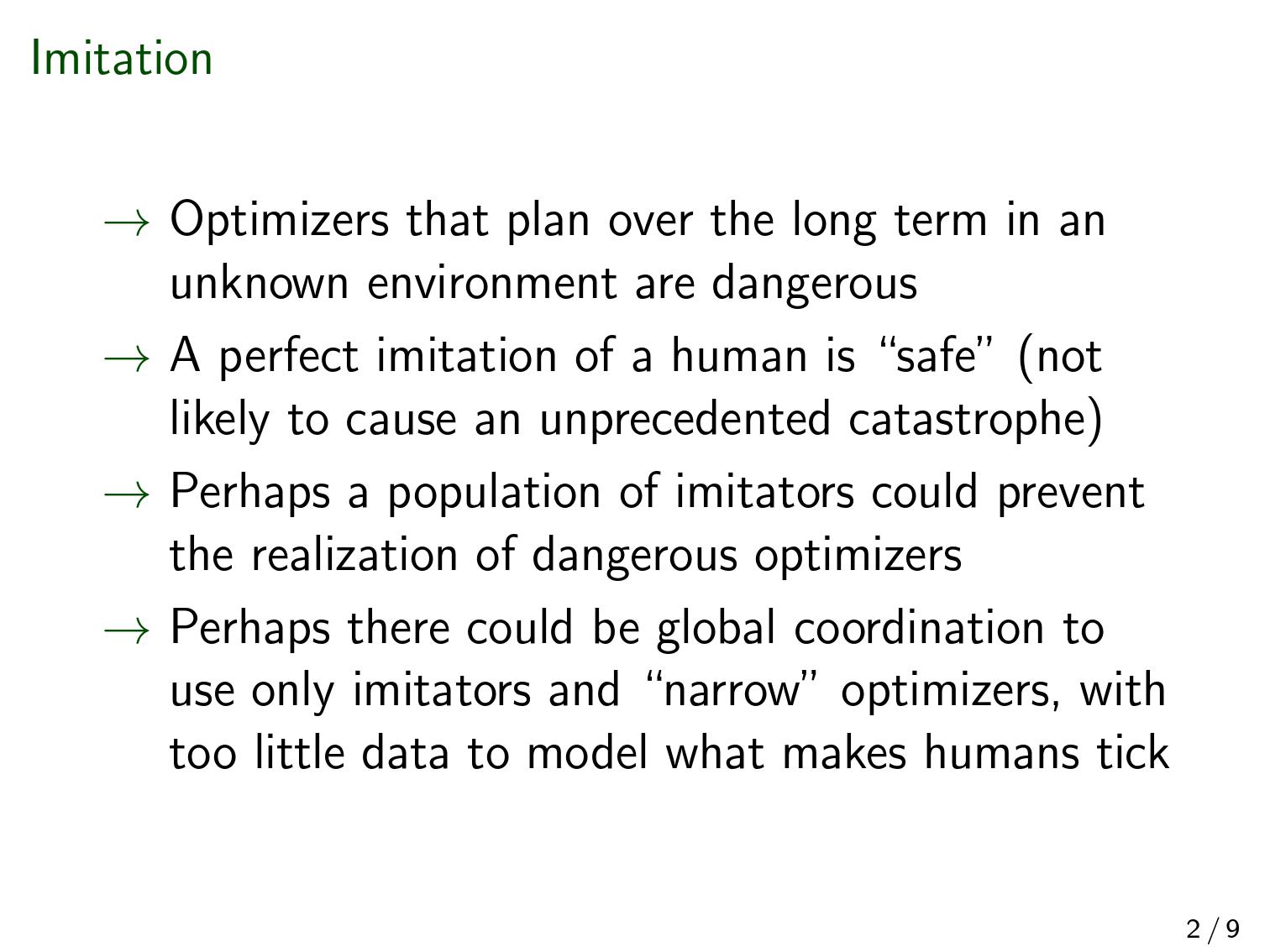


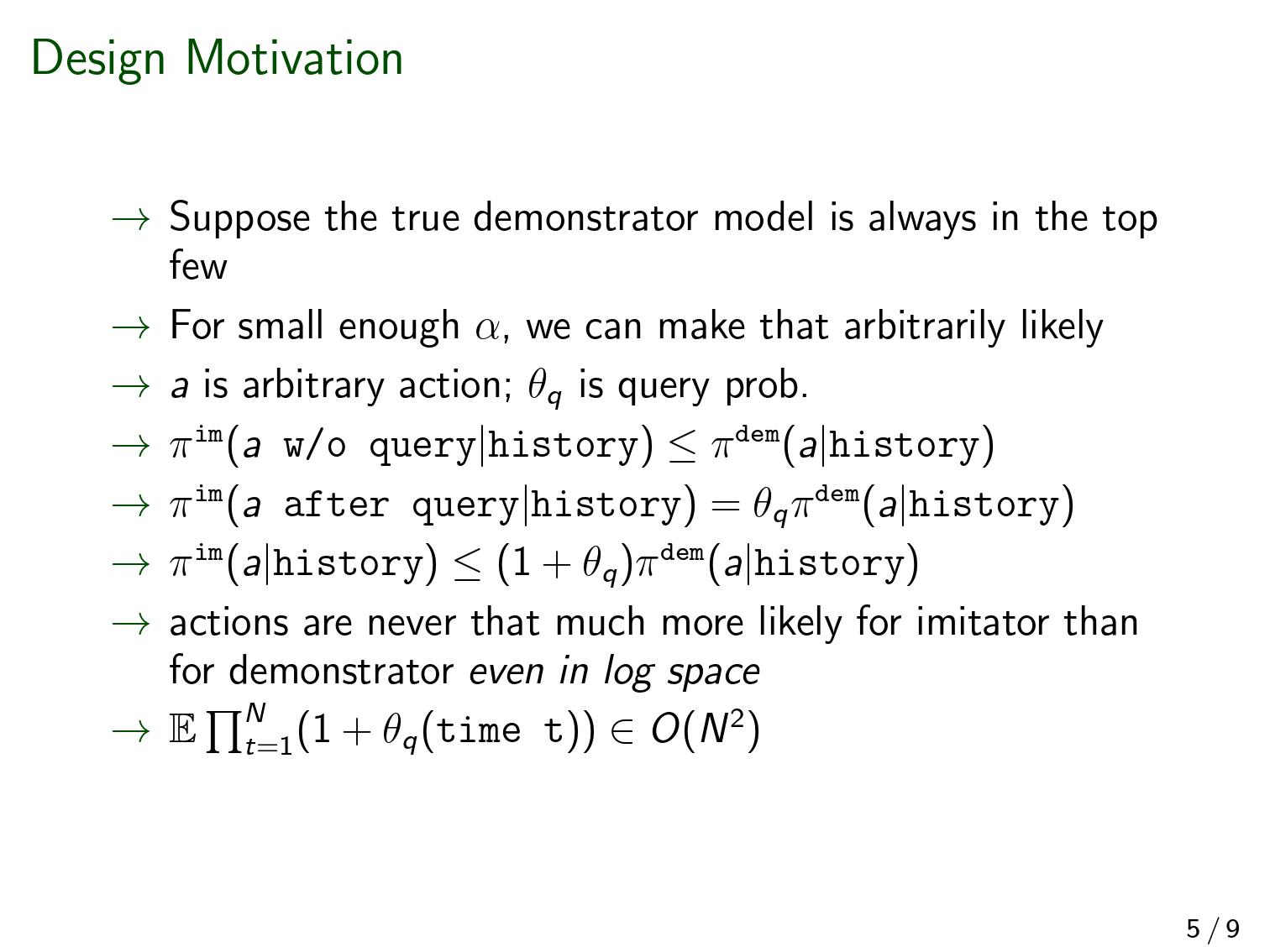
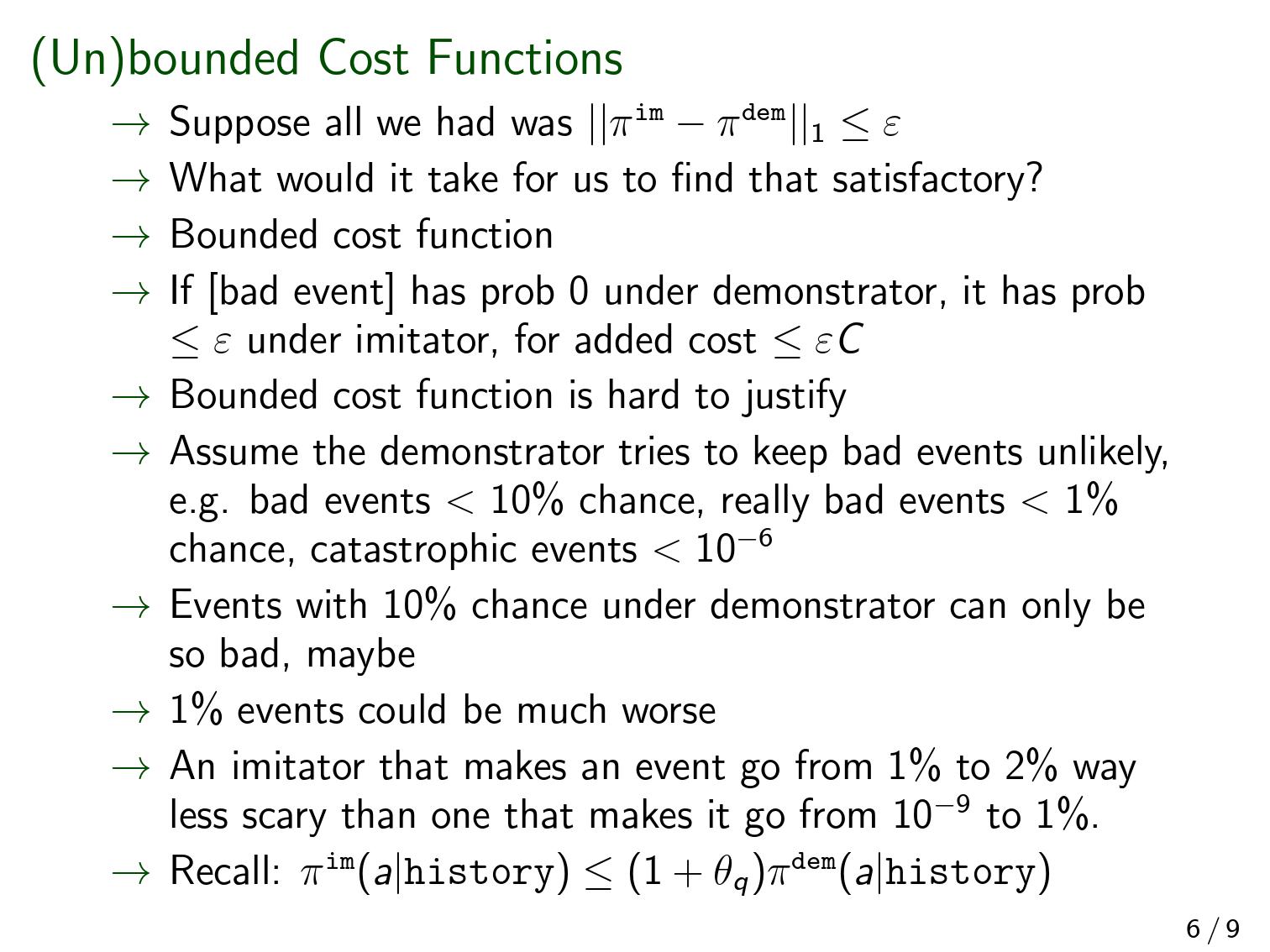
Below, and refer to the probability of the event supposing the demonstrator or imitator were acting the entire time. The limit below refers to successively more unlikely events ; it's not a limit over time. Imagine a sequence of events such that .
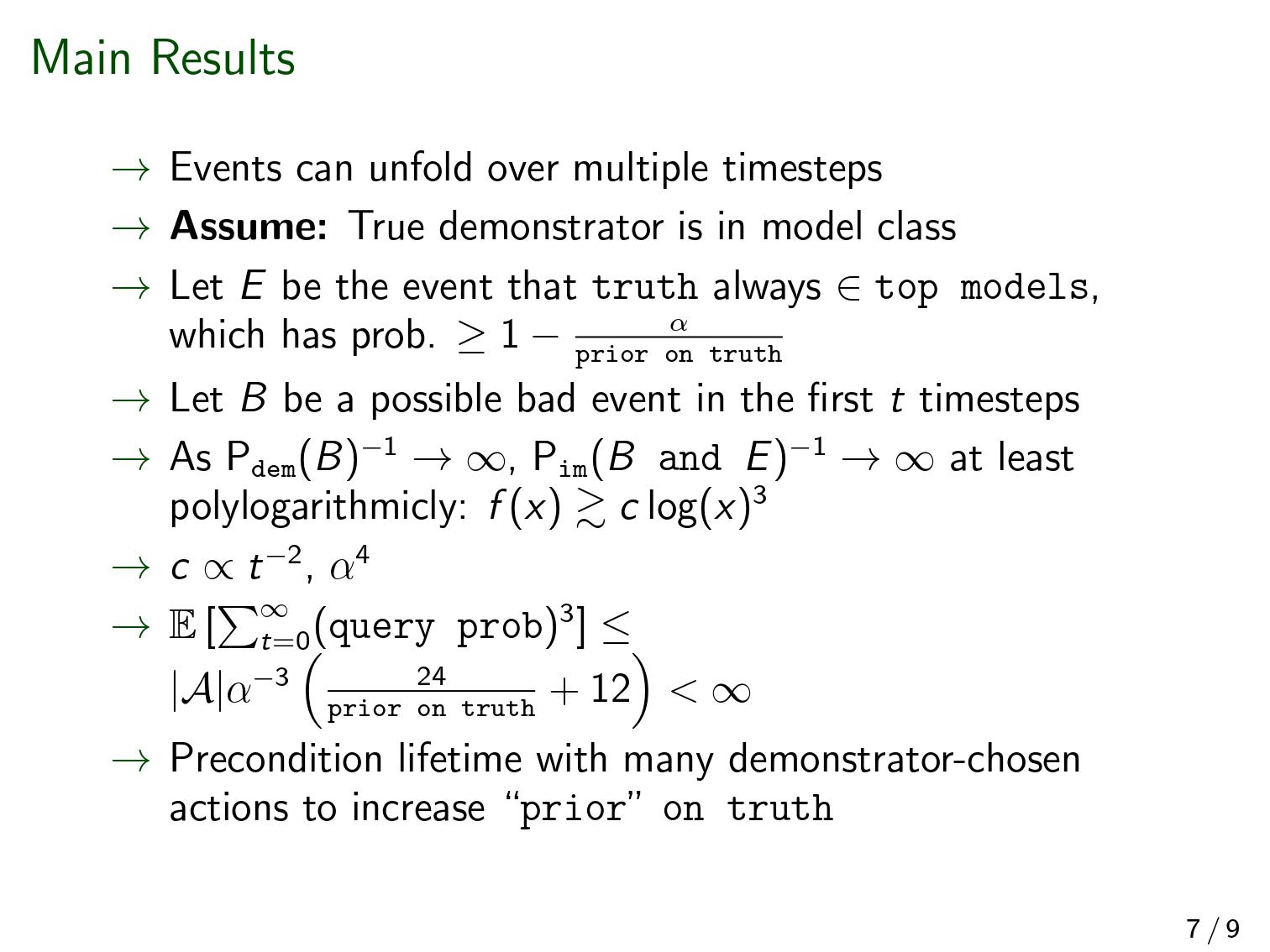
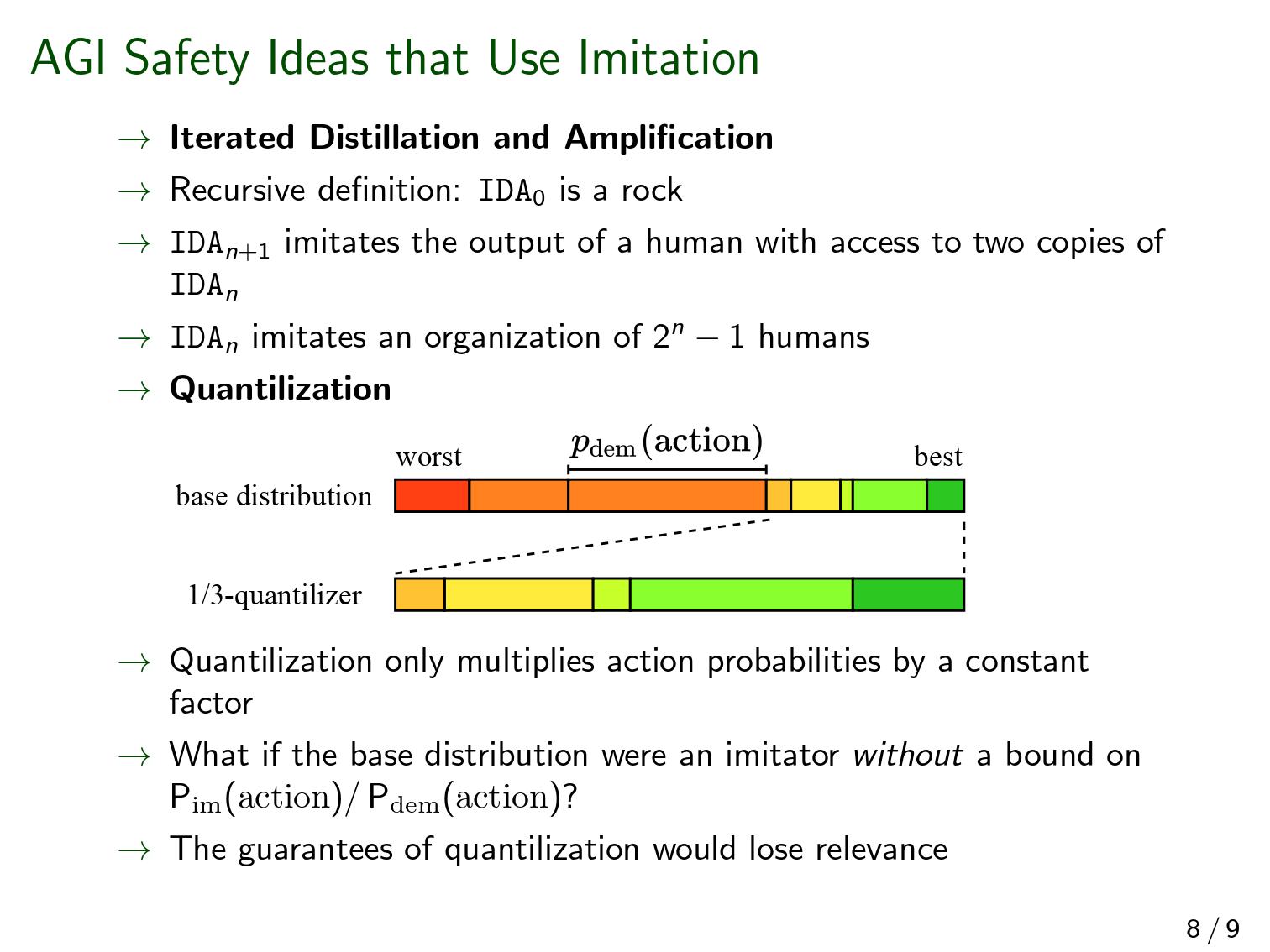
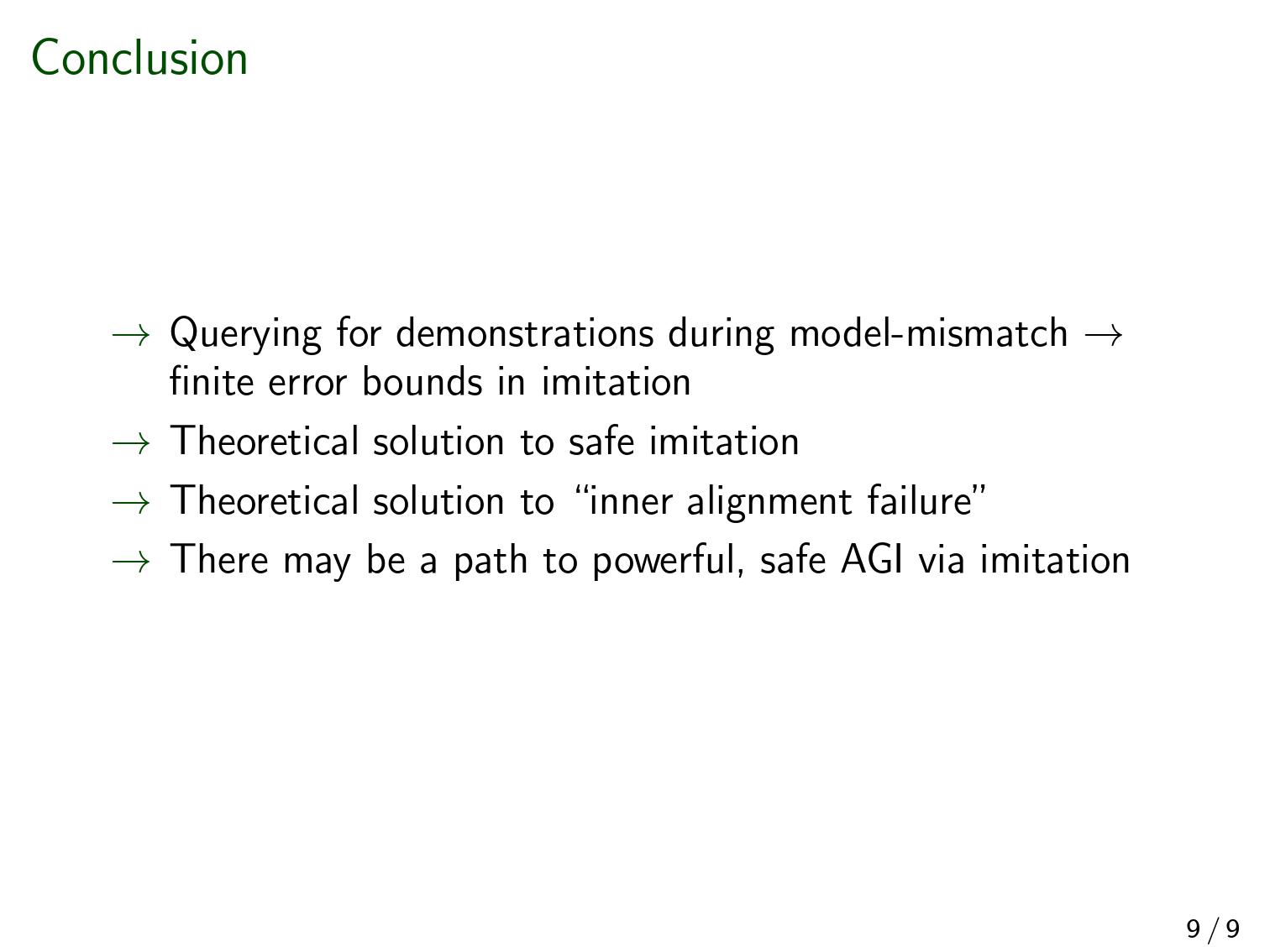
You are saying that a special moment is a particularly great one to be treacherous. But if P(discovery) is 99.99% during that period, and there is any other treachery-possible period where P(discovery) is small, then that other period would have been better after all. Right?
This doesn't seem analogous to producers driving down profits to zero, because those firms had no other opportunity to make a profit with their machine. It's like you saying: there are tons of countries where firms could use their machines to make stuff and sell it at a profit (more countries than firms). But some of the places are more attractive than others, so probably everyone will sell in those places and drive profits to zero. And I'm saying: but then aren't those incredibly-congested countries actually worse places to sell? This scenario is only possible if firms are making so much stuff that they can drive profit down to zero in every country, since any country with remaining profit would necessarily be the best place to sell.
It seems to me like this is clearly wrong in the limit (since simple consequentialists would take over simple physics). It also seems probably wrong to me for smaller models (i.e. without huge amounts of internal selection) but it would be good for someone to think about that case more seriously.
if the treacherous model is 100 bits smaller, then it feels like there must be around 2^100 treacherous models that are all simpler than the intended one. If nothing else, it seems like you could literally add garbage bits to the treacherous models (or useful bits!).